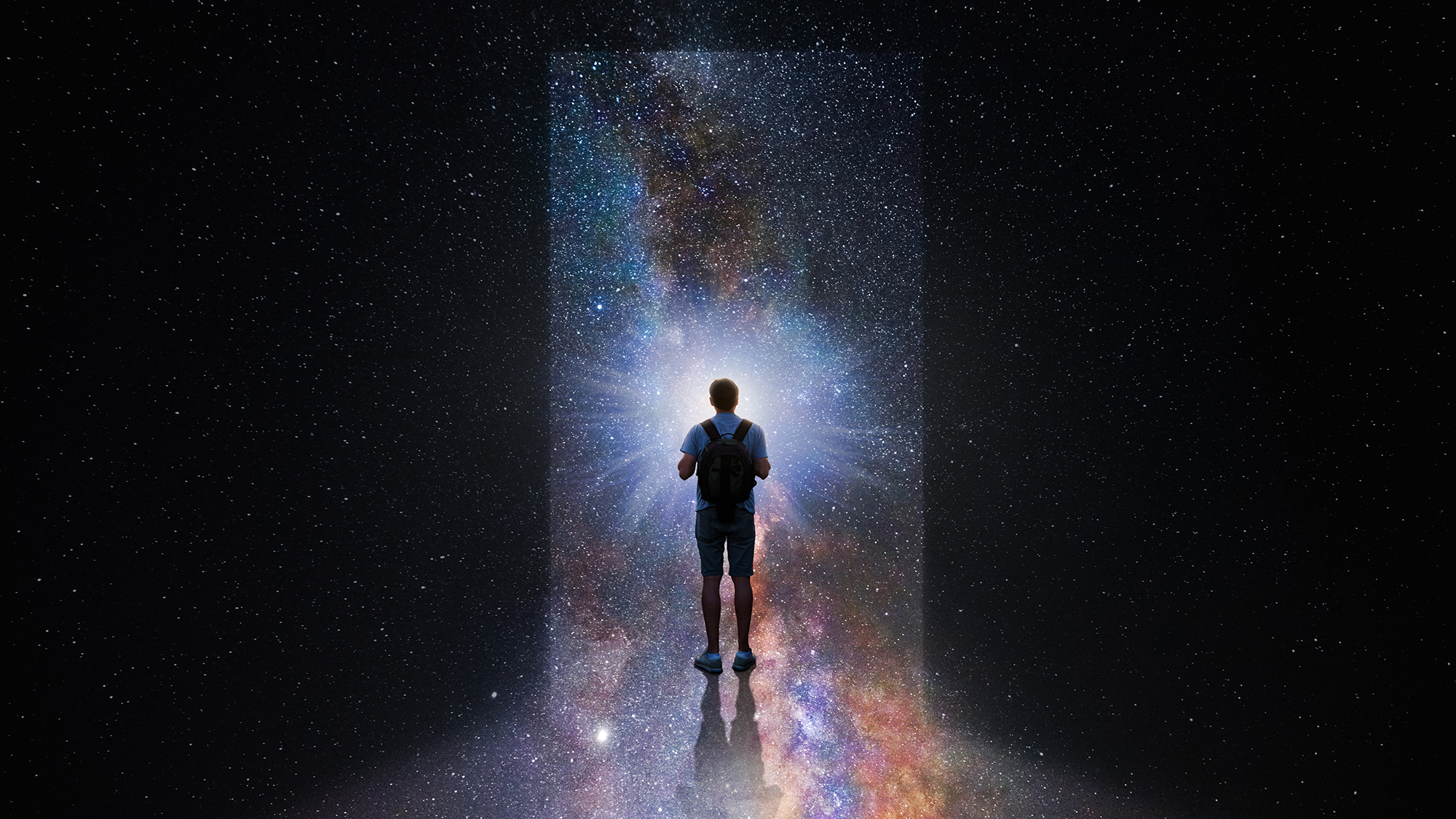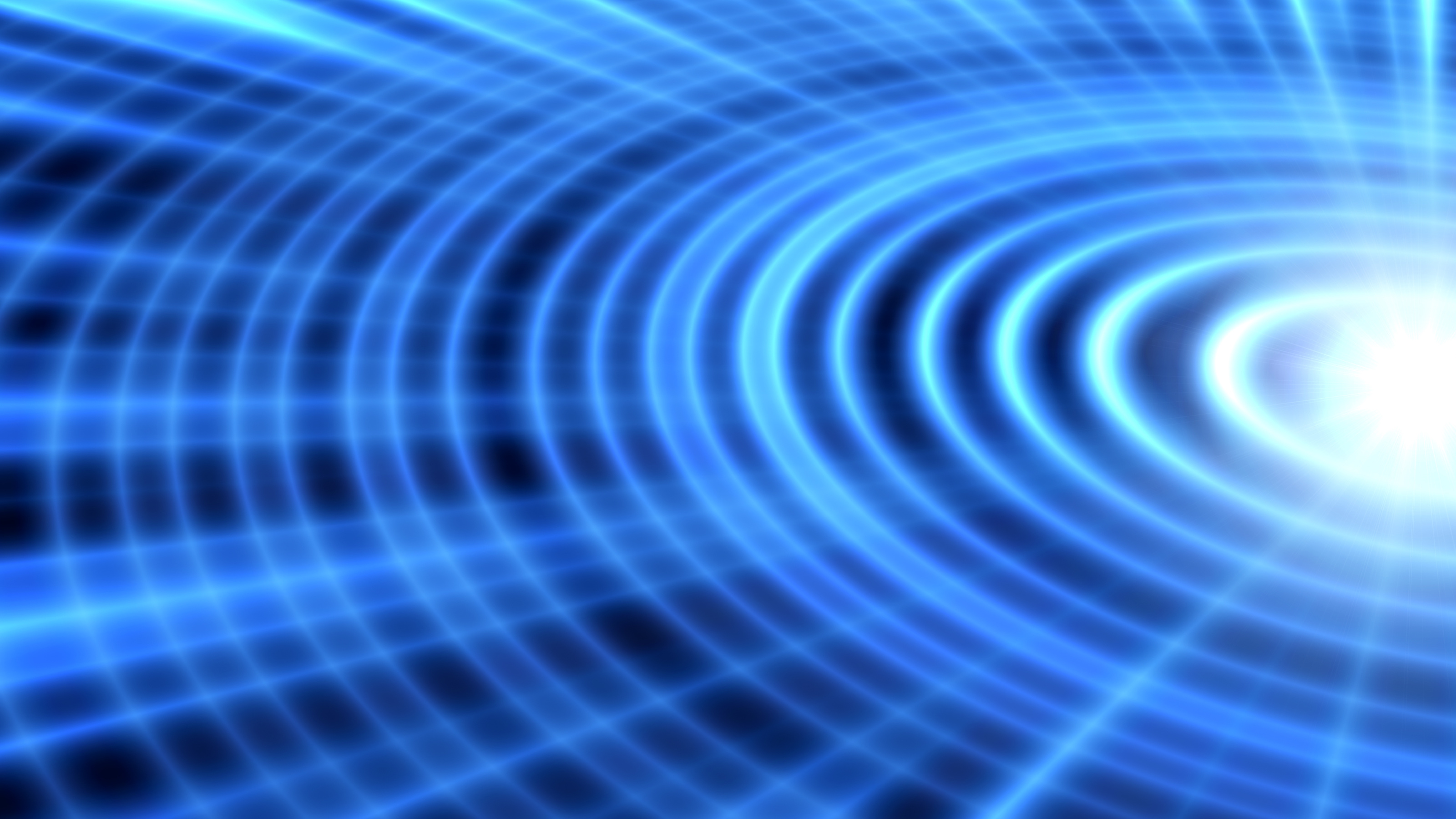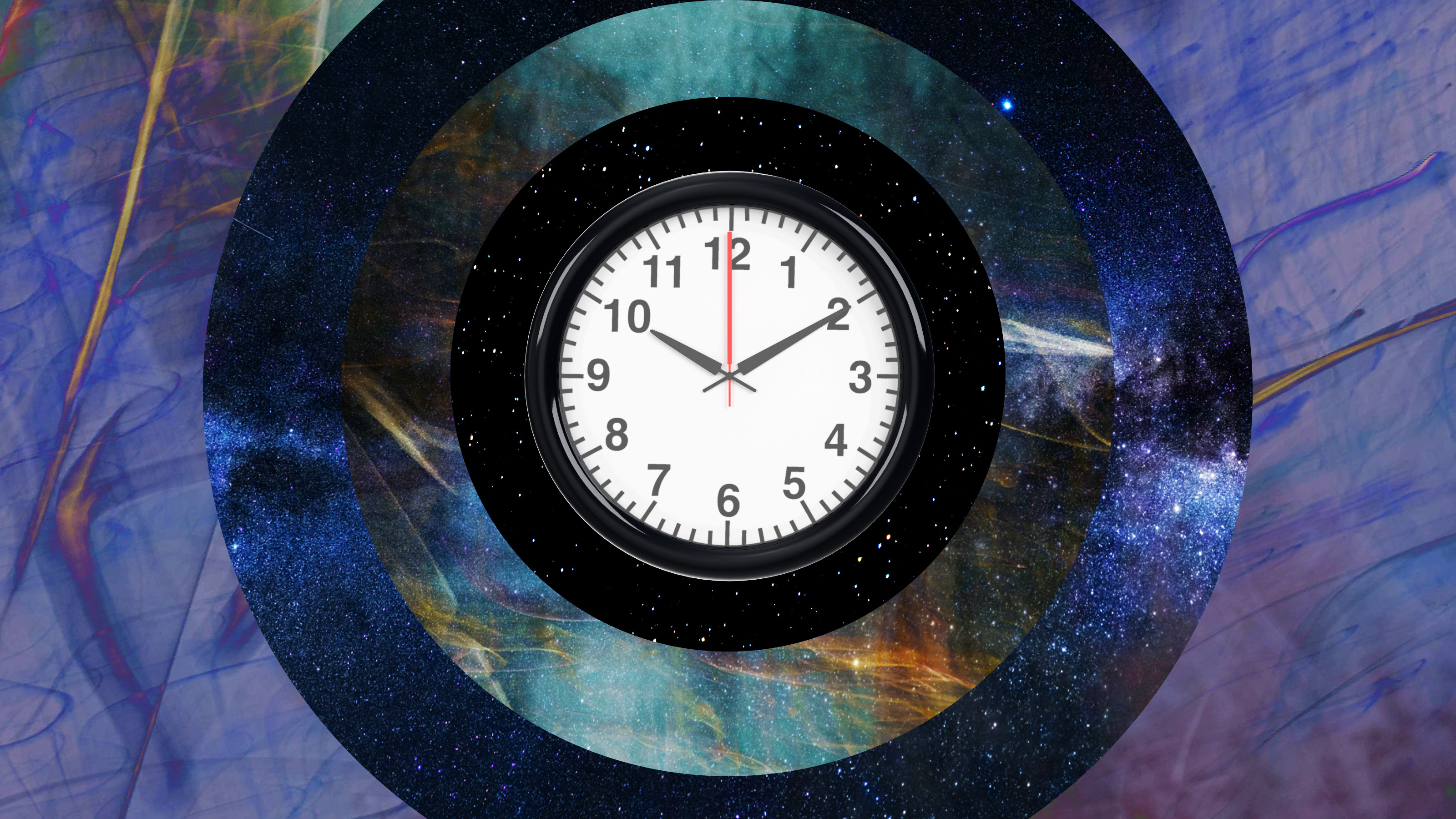What is the shape of space itself?
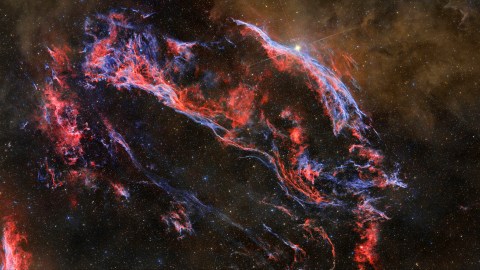
- The shape of space plays a significant role in the future of the cosmos, determining whether the Universe will expand indefinitely or contract in a "Big Crunch."
- There are three commonly discussed shapes of space: flat, spherical, and hyperbolic or "saddle." Each shape has distinct geometrical properties, such as the behavior of parallel lines and the sum of angles in triangles.
- Astronomers have used radio antennas to image the Universe after the Big Bang, and they have determined that space is flat.
The question of the shape of space certainly seems a bit nonsensical. Space just is. It’s the place that holds stars and planets, and it’s big enough to allow comets and asteroids to buzz about the Sun, with very little chance of any of them colliding. Asking whether space has a shape doesn’t seem to make much sense.
But the question of the shape of space has very real implications for the future of the cosmos — playing a role in whether the Universe will expand forever, or reverse its current expansion in a cataclysmic Big Crunch. Furthermore, space could be infinite, or it could be that if you travel far enough in one direction, you’ll return to your starting point.
3 possible shapes of space
The idea of space having a shape arose with Einstein’s theory of general relativity in 1915. In it, he discovered that he could describe the effect of gravity not as a force between two astronomical bodies, but rather as the bending of space and time. While Newton described the motion of the Moon around the Earth as the Moon traveling in a circle, Einstein described it as the Moon traveling in a straight line, but in a curved space. It’s not so different from how a person walking in what seems like a straight line along the Earth’s equator is actually following a giant curve.
In Einstein’s theory, close to every astronomical body, space is curved and distorted from the shape it would be without any matter nearby. Near a black hole, space is distorted enough to trap even light itself, despite classical physics saying that massless light does not experience gravity at all. If space can be distorted, and the Universe consists of space, what is the shape of the Universe?
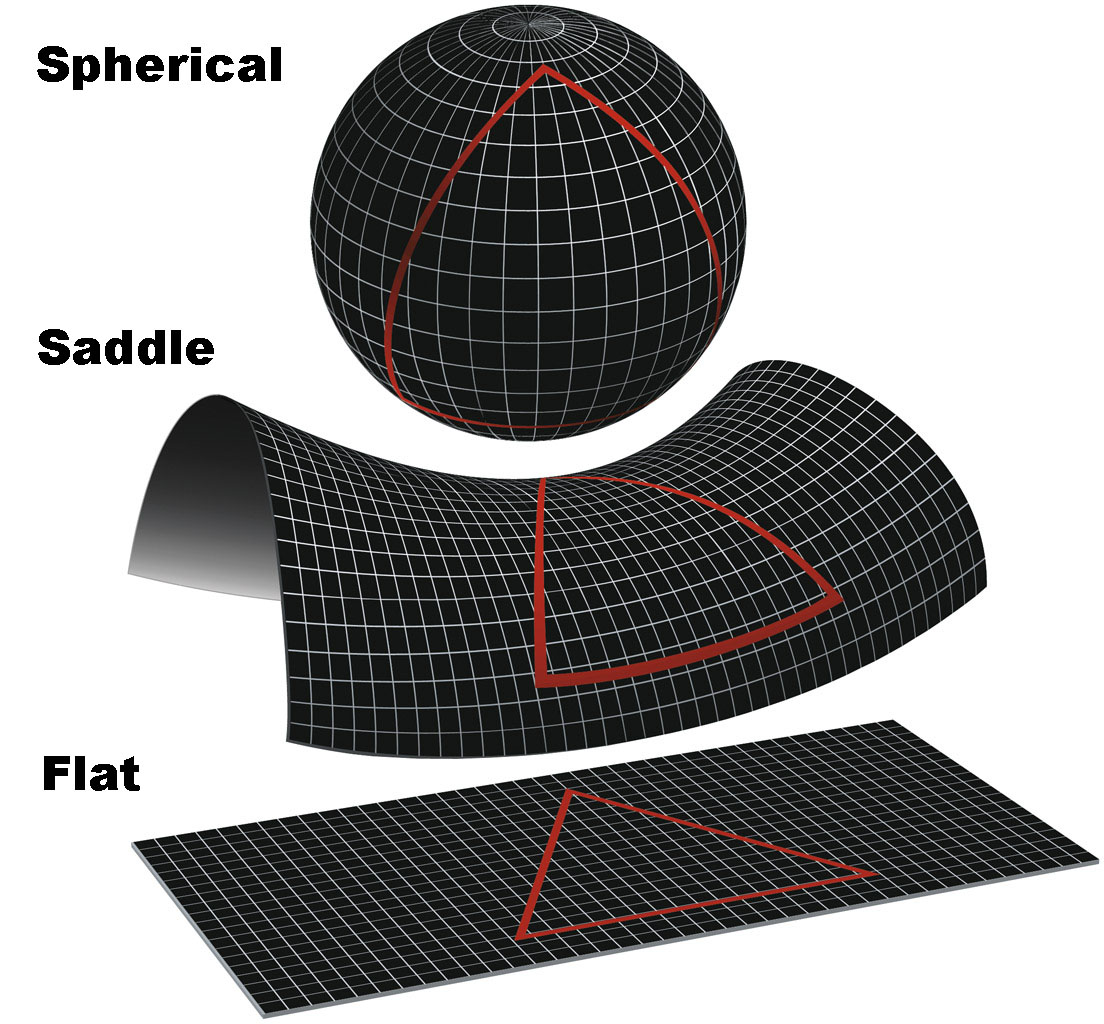
Imagining the curvature of our familiar three-dimensional space is rather difficult, so it is valuable to think about the curvature of a two-dimensional one. Three shapes of space are commonly discussed: flat (like a tabletop), spherical (described by the surface of a globe), and hyperbolic or “saddle” (which looks essentially like a giant saddle). Flat and saddle space are infinite in extent, while spherical space is not.
The 270° triangle
The behavior of flat space is taught in high school geometry courses. In it, two parallel lines never cross, and the sum of the angles of a triangle add to 180°. In spherical space, things are quite different. Here, parallel lines cross, and the sum of angles in a triangle are more than 180°.
Don’t see it? Take a city like Quito, Ecuador, which sits directly on the equator. The angle separating north and west is 90°. Follow the equator to a location 90º west of there. At that location, north and east are also separated by 90º. If you follow the two lines northward, which are parallel at the equator, they meet at the North pole and form a 90º angle. And, if you sum the angles of the triangle described by the two cities and the North pole, they add to 270°.
Saddle space has similar surprises, however in saddle space, two parallel lines diverge, drawing farther apart. And the sum of the angles in a triangle in saddle space is less than 180°.
Determining the shape of space
So, is it possible for researchers to determine the shape of the Universe? It turns out that it is. Astronomers have employed a very clever approach to answer the question. And it begins by using radio antennas to image the Universe shortly after the Big Bang.
Shortly after the Universe began, it was filled with a hot plasma, which glowed white hot. The plasma also was full of soundwaves with a preferred wavelength. Just like sound waves in the air, this caused density differences in the plasma. Where the plasma was denser, it was a little hotter; conversely, areas with lower density were colder. The distance between the hot and cold spots was determined by the wavelength of the sound waves.
In the 13.8 billion years since that time, the Universe has expanded and cooled. What once was white hot, has cooled to a temperature of about -450°F (-268°C). At this temperature, that early temperature variation cannot be seen by the human eye, but it can be imaged using sensitive radio telescopes.
Light travels at a fixed speed, which means that light from distant objects was emitted far in the past. This also means that if we look at light emitted far enough away, we can literally see the conditions of the Universe shortly after the Big Bang. Indeed, light of the Big Bang emitted 13.8 billion years ago can now be seen on a sphere that encircles the Earth.
The wavelength of sound in the early Universe set the distance between two adjacent hot spots. The distance between the hot spots and the Earth is determined by the speed of light and how long it took the light to get to Earth. The centers of two adjacent spots and the Earth form a triangle. And astronomers can use geometry to calculate the angle between two adjacent hot spots as seen in an Earthbound telescope.
Remember that the shape of space can distort triangles. If space is flat, the spots should be separated by 1°; if space is spherical, the angle should be bigger than 1°; and if space is saddle-shaped, the angle should be smaller than 1°.
A flat Universe
When astronomers examined their data, they measured the angle to be 1°. From this, they concluded that the shape of space in the Universe is flat, which means it is infinitely large — much larger than the Universe we can see with telescopes.
However, no measurement is 100% accurate. They all have uncertainty. So, it remains possible that the Universe is slightly curved, and our equipment isn’t precise enough to measure it. Or perhaps the Universe is curved and very big, and it is only because we see only a little piece of it that it looks flat.
Given that flat is one unique possible shape out of countless alternatives, explaining its flatness is one of the unanswered mysteries of science.
